This weekend is expected to mark the 10,000th death from Covid in Australia since the virus emerged two and a half years ago.
The dramatic government interventions that closed state and international borders, shut down cities for months on end and imposed unprecedented restrictions on the public’s movement and behaviour in most states have all but ended.
Yet the sense that the pandemic is in some way “over” is not reflected in the Covid death toll. Half of the 10,000 deaths have occurred in the past six months, and the daily toll is averaging about 50.
It has become easy to get used to the scale of the tragedy but behind each death is a story that ripples through dozens of lives. This is how we got here.
March 2020 – the first death
On 21 January 2020 the Morrison government announced that passengers on flights from China would be screened at the airport. At that time about 220 cases of the disease had been reported, and human-to-human transmission had just been confirmed.
The chief medical officer at the time, Prof Brendan Murphy, said anyone who presented with possible symptoms – mainly a high fever – would be asked to isolate.
“There’s no way of preventing this getting into the country if this becomes bigger,” he said. “We need to respond to it as we always do.”
Most of the cases until then had been reported in China but there were confirmed cases in South Korea, Thailand and Japan, where the Diamond Princess cruise ship had just departed from Yokohoma with 2,666 passengers and 1,045 crew onboard.
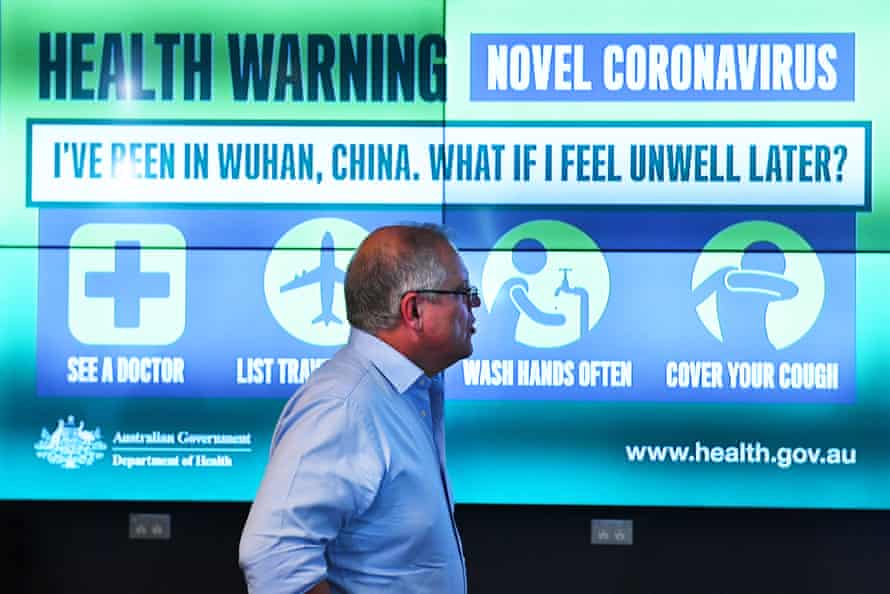
About 200 of the passengers were Australian. Among them were James and Theresa Kwan, 78 and 79, their son Edwin and daughter-in-law Gillian.
The first case of the novel coronavirus was reported in Australia on 25 January.
On 3 February, 14 days into its 16-day voyage, the Diamond Princess returned to Yokohoma. An 80-year-old passenger, who had disembarked on 25 January, had since been confirmed as having the coronavirus. By 5 February 10 passengers were confirmed cases and the ship was placed into a two-week quarantine. Eventually, 691 people would test positive.
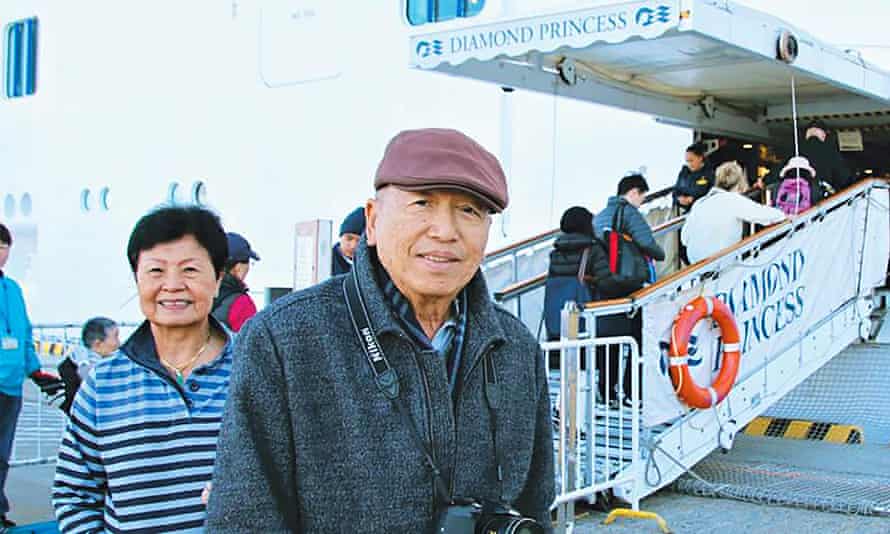
Edwin Kwan was among those who tested positive early. He was in hospital in Japan when his father, mother and wife were put on an evacuation flight to Howard Springs in the Northern Territory with 161 other Australians, arriving on 20 February.
James Kwan tested positive on arrival. It was the 15th positive case in Australia.
Just over a week later, on 1 March, he died in hospital in Perth, the first coronavirus fatality in Australia.
Kwan, a keen golfer, was a leading figure in the Western Australian tourism industry, specialising in bringing in visitors from Asia.
May 2020 – 100 deaths
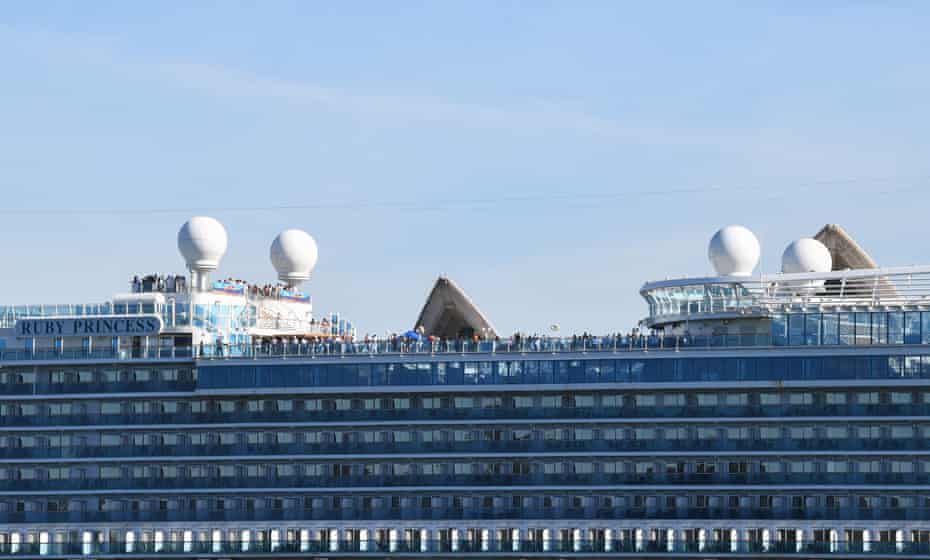
In early March another cruise ship, the Ruby Princess, was en route from Sydney to New Zealand. On 19 March it arrived back in Sydney Harbour to ambulances waiting at the docks, ready to pick up two patients who were suspected Covid cases. Later that day all 2,700 passengers aboard the ship disembarked, some travelling on to other states or boarding international flights to their home countries.
It was the beginning of the first spike in coronavirus cases in Australia. The number of confirmed cases increased 11-fold between 14 and 27 March, the day that national cabinet announced that all international travellers to Australia would be subject to 14 days of mandatory hotel quarantine. By 29 March the country had entered its first lockdown.

The cruise ship would eventually be linked to at least 850 positive cases and 28 deaths.
Among them was an Adelaide woman, Linda Lavender, who was travelling with her husband of 40 years, Steve. They had renewed their wedding vows and were on the trip of a lifetime on the Ruby Princess.
Lavender fell ill shortly after disembarking and died at Royal Adelaide hospital on 1 April, aged 62. She left behind three children, four grandchildren and Steve, who described her as “always an angel”.
By the end of April the threat from the pandemic appeared to have eased. Australia’s international borders remained closed and daily case numbers had dropped to their lowest level since the start of March, with all those testing positive in hotel quarantine.
State and territory leaders eased lockdown conditions and announced the return of school. On 8 May Morrison said he planned to reopen the country by July, outlining a three-step strategy to end restrictions. Australia passed 100 deaths on 19 May.
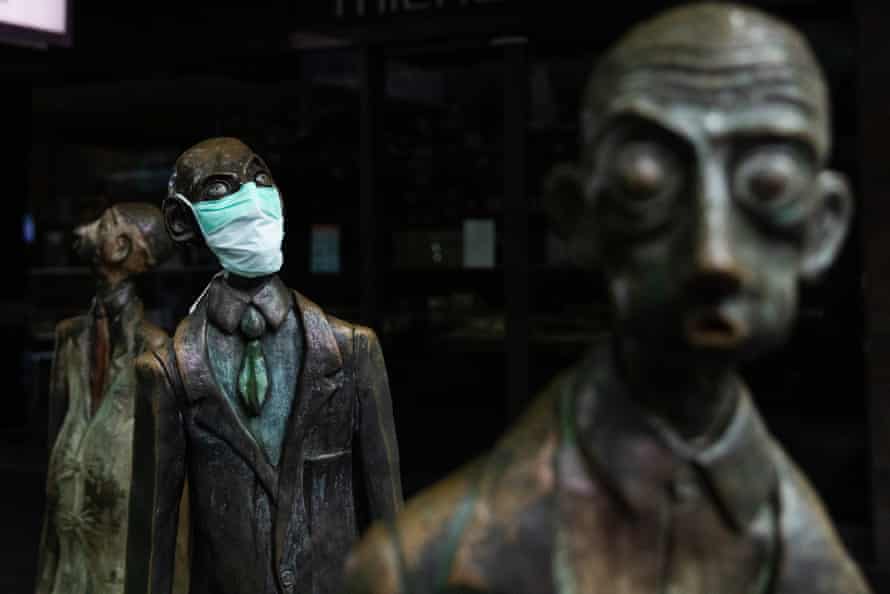
August 2020 – 500 deaths
Morrison’s optimism quickly proved premature. In May several people employed in the hotel quarantine system in Melbourne, under health protocols that were hastily written and poorly enforced, caught the virus from international travellers and transmitted it to their communities, mainly in Melbourne’s north. Genomic sequencing of positive test results recorded from May to August showed 99% of cases could be linked back to three quarantine hotels – 90% to the Rydges on Swanston alone.
On 30 June the Victorian premier, Daniel Andrews, tried to curtail the outbreak by placing 36 suburbs of Melbourne with the highest case numbers into lockdown, while the rest of the city enjoyed free movement. On 4 July nine public housing towers with a combined 3,000 residents were placed into the hard lockdown, with no warning other than the sudden presence of 500 police officers. An investigation by the Victorian ombudsman later found the move violated the state’s human rights laws.
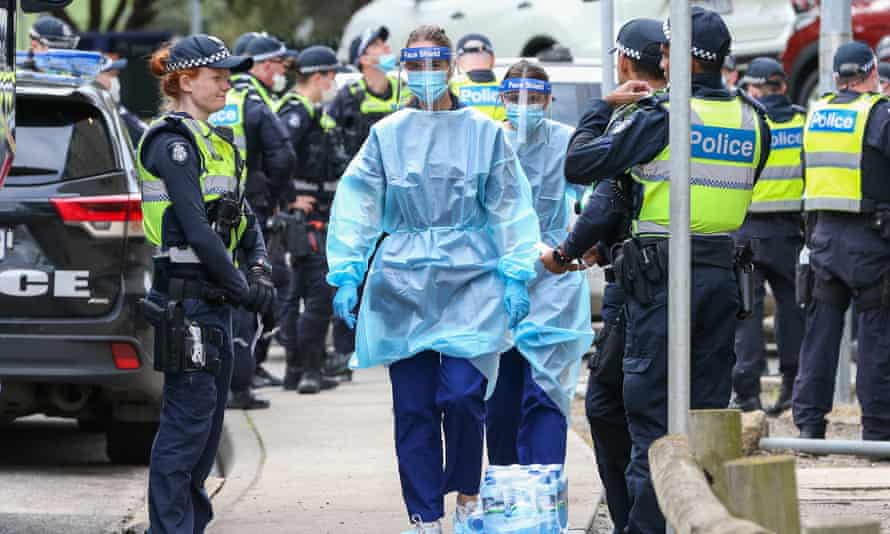
The virus had already escaped interstate: on 3 July a Melbourne man who travelled to Sydney for work attended a party at the Crossroads Hotel in Casula.
On 6 July Victoria reported 127 cases and 22 deaths – the highest jump in case numbers since the pandemic began – and Andrews announced a plan to close the New South Wales border. It was the first time the border between states had been closed since the flu pandemic in 1919.
The next day the whole of Melbourne was put into a lockdown that was supposed to last just six weeks. A month later, on 2 August, Andrews introduced stage-four lockdown conditions, including the mandatory wearing of face masks. Those rules were also supposed to last six weeks, but it would be eight before the curfew lifted, and 11 weeks before a time limit on exercise was lifted.

The virus had already moved into aged care homes. At the peak of the wave, on 5 August, 725 new cases and 15 deaths were reported. Andrews, speaking at his lengthy daily press conference, said it was a “terrible time”.
St Basil’s, a residential retirement home run by the Greek Orthodox church in Fawkner, was the worst affected. Some 94 residents and 94 staff members contracted Covid in July and August, and 45 residents died.
In total there were 655 Covid-related deaths in aged care in Victoria in 2020.
Among them were Sybil and John Beardon, who died within a day of each other at Cabrini hospital in Malvern. Sybil moved into Menarock aged care home in 2015 and John followed a year later. Their funerals were limited to close family due to Covid restrictions but their daughter Liz Beardon says they “deserve to be remembered”.
August 2021 – 1,000 deaths
Melbourne emerged from lockdown in the spring of 2020, recording its first “doughnut day” – no new cases, no new deaths – on 26 October. The sacrifice of locking down Melbourne, missing funerals and closing internal state borders had achieved its aim: the city was “covid zero” in time for Christmas. An outbreak in South Australia was speedily contained in November. Australia believed it could beat the pandemic.
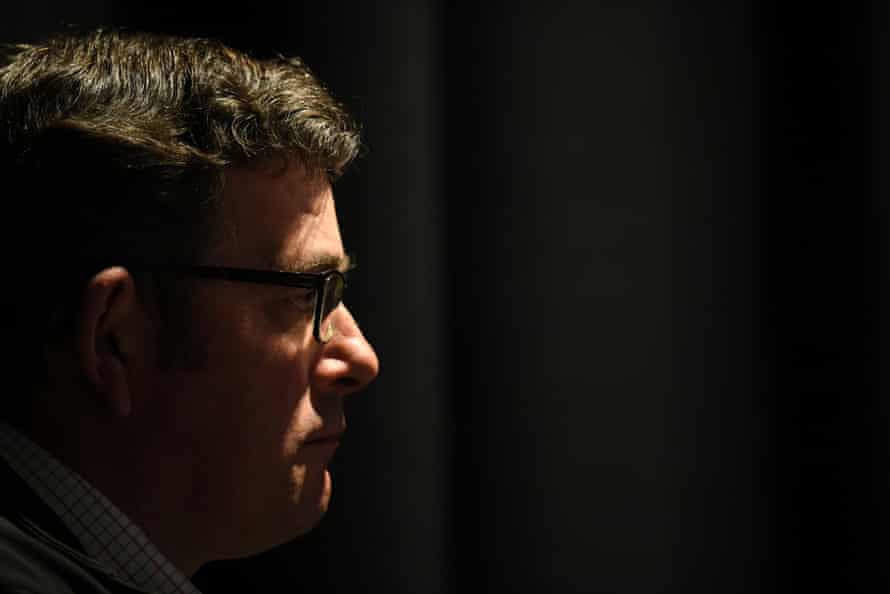
But on 20 December the NSW premier, Gladys Berejiklian, announced that a small cluster of cases in Sydney’s northern beaches had doubled in size to 68. Other states began introducing restrictions on travel from Sydney. By the next day the outbreak had spread to the western suburbs. Borders slammed shut against Sydney, and within weeks the outbreak was contained.
The pattern was repeated in February 2021 in Perth and then Melbourne, and a new protocol was established: localised snap lockdowns to contain outbreaks before they spread further.
At the end of February the first doses of Covid vaccines arrived in Australia. Morrison was the 12th person in Australia to receive a dose of Pfizer vaccine, at a televised event in which an aged care resident, Jane Malysiak, was the first recipient. There was a sense of optimism, despite the significant roadblock of a blood clot warning for the AstraZeneca vaccine, announced by the prime minister at a late-night press conference in early April.
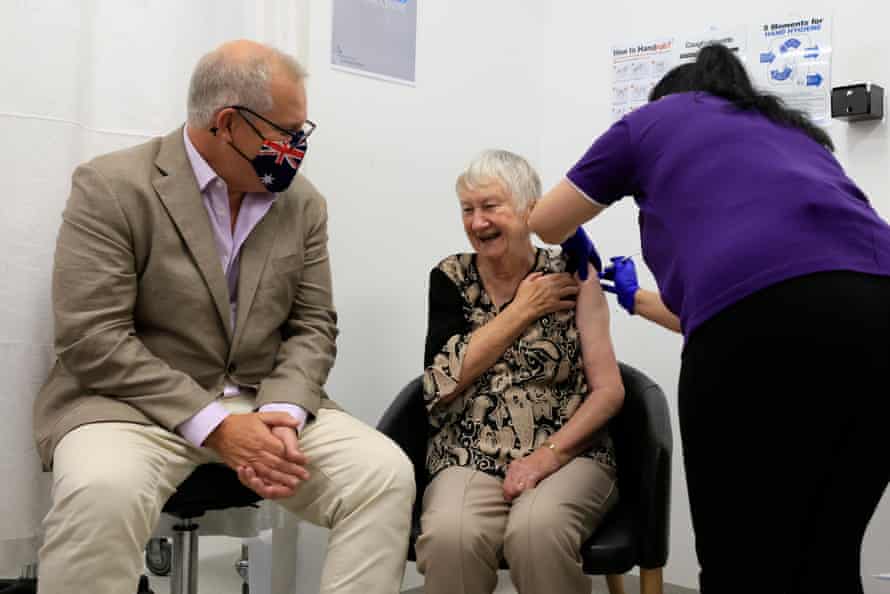
Advice from Australia’s vaccine advisory body initially recommended that people under 50, later rising to 60, be given the Pfizer vaccine rather than AstraZeneca, slowing the vaccine rollout.
That vaccine optimism held until June, when a limousine driver who picked up passengers from Sydney airport was exposed to the highly infectious Delta strain, and then went to the busy Bondi Junction shopping centre before realising he was unwell. The Bondi cluster spread rapidly, to Queensland, the Northern Territory and Victoria, which all introduced border restrictions to people from NSW.
On 26 June Sydney was placed into lockdown, with parts of south-western Sydney subjected to harsher restrictions and heavily targeted by police. An inquiry later heard that people were dying in their homes while being made to feel like criminals and alienated from the rest of the city.
By July the outbreak had taken hold in Melbourne, which was plunged back into lockdown for a further 77 days.
Federal and state governments were under increasing pressure to allow younger Australians, who made up the bulk of new infections, access to a coronavirus vaccine. Concerns about the very low risk of complications waned against a desire to increase vaccination rates and end the lockdown.
In July Berejiklian, who had by that point already received the AstraZeneca vaccine, encouraged people under 40 to consider getting it as they were not yet eligible for Pfizer. Victoria soon followed.
Katie Lees, 34, heeded the call and was vaccinated in late July. She died on 4 August from a rare blood clotting disorder caused by the vaccine. Her father, Ian Lees, says her decision had been made in the name of protecting the wider community. “The last time I saw her conscious was the morning before she went to get her vaccine,” he says. “She said, ‘Dad, I’m so proud I’m getting to do my bit for the community.’”
On 19 August Australia’s vaccination program was opened up to everyone aged 16 and older, who could access one of three available vaccines.
Towards the end of August Australia recorded its worst daily case number of the pandemic so far: 1,218 new cases and six deaths in NSW, 92 new cases and an extended lockdown in Melbourne.
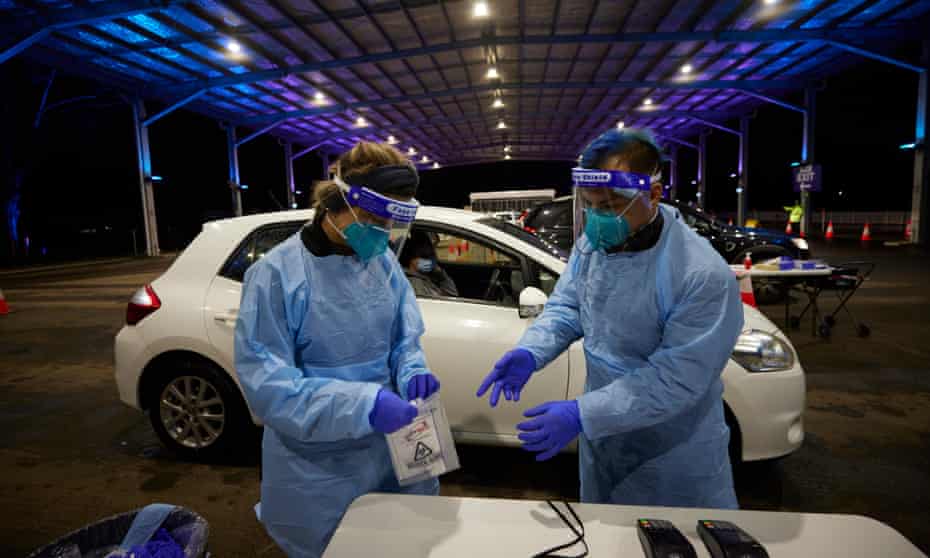
As Australia passed 1,000 deaths, blame for the toll began to shift from the public health response to individuals who had the temerity to have pre-existing health conditions. On social media, the only town square still accessible to those locked down in Australia’s largest cities, people responded to the daily Covid numbers by asking if those who died had been vaccinated, or if they an underlying health condition.
Later the Australian Bureau of Statistics would report that 69.5% of the more than 2,500 deaths reported in the first years of the pandemic were in people who also had underlying chronic health conditions but that “the majority” of the deaths were due directly to Covid-19.
February 2022 – 5,000 deaths
By 5 November 80% of Australians over 16 had received two doses of a Covid vaccine, thanks in part to workplace mandates enforced by state governments.
NSW and Victoria opened up and promised they would not return to lockdown again, despite warnings of a new variant, Omicron, popping up in other countries.
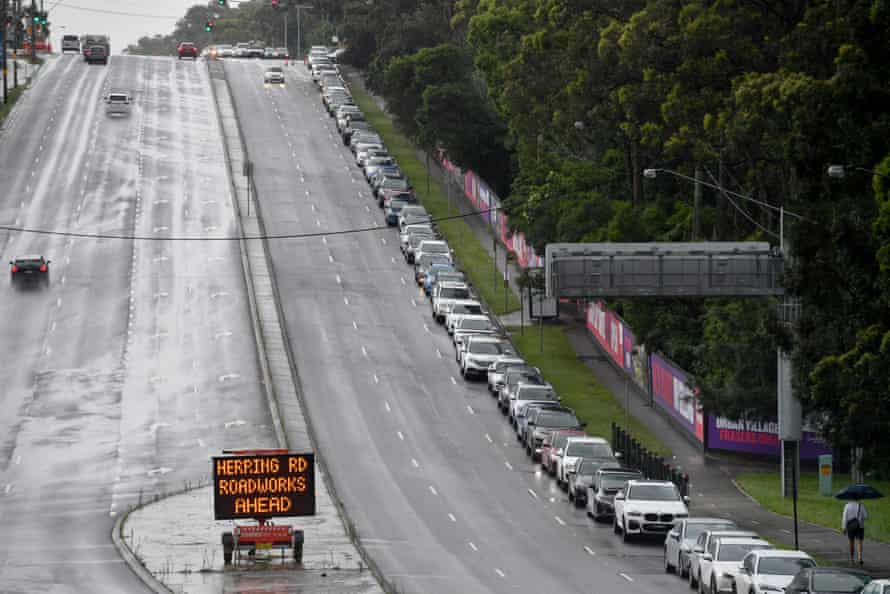
Omicron arrived with a vengeance in mid-December, spreading faster than its predecessors, despite the highly vaccinated population. Rapid antigen tests, of which Australian health authorities had failed to secure supply, were suddenly in high demand. By 29 December the tests had doubled in price. With some states still requiring a negative PCR test to cross borders, thousands queued at testing stations in the days before Christmas, many waiting several hours to get tested, then facing an anxious wait for results before they could travel.
Australia recorded more than 33,000 positive cases on 30 December but the daily numbers became increasingly unreliable as people were either unable or unwilling to access tests. On 12 January 2022, the day Queensland announced its interstate borders would reopen, there were more than 175,000 new cases. Omicron ripped through young Australians, those who had jumped at the chance to socialise again. In January a DJ playing at Melbourne’s Sircuit bar asked punters to cheer if they’d had Covid over New Year’s Eve: the crowd erupted.
By 21 February the rate of transmission had slowed again. More than two-thirds of Australians over 16 had received three shots of a Covid-19 vaccine and the daily case number was just over 25,000.
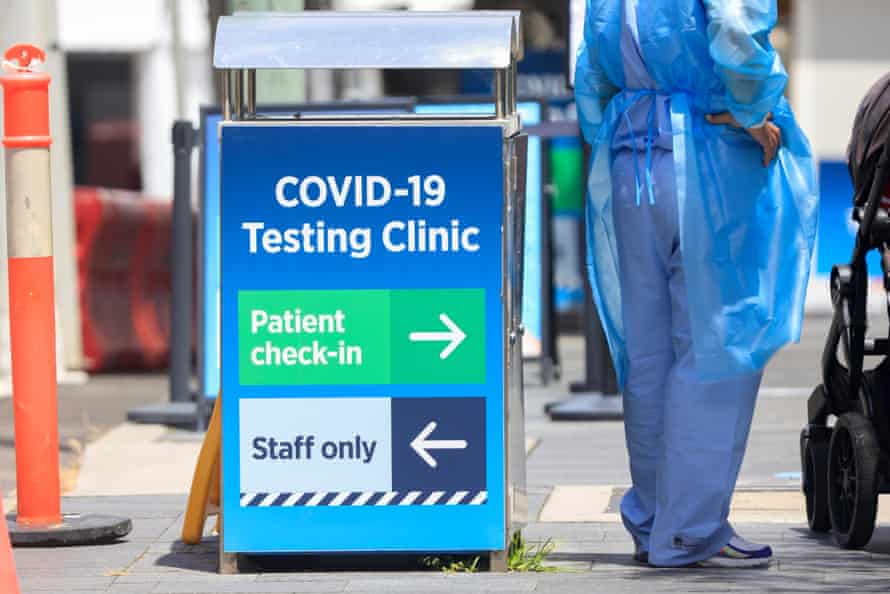
But the death rate had begun to climb rapidly: on 22 February Australia recorded 59 deaths, bringing its cumulative death toll to 5,025.
Among those who died in the first deadly crash of the Omicron wave was 95-year-old Patricia Woods, who tested positive to Covid while in Adelaide hospital recovering from a fall. Her granddaughter Paige Carter was granted an exemption to SA’s strict hospital visiting policy just hours before Woods died but was not allowed to go see her until visiting hours the next morning. Woods died at 3am.
July 2022 – 10,000 deaths
There has been no significant change in the daily death rate between February and now, no major outbreak or cluster with a named origin, but the line shows a stubborn and steep upwards trend.
In the middle of June Prof Margaret Hellard from the Burnet Institute told a Victorian parliamentary inquiry that Australia could record as many as 15,000 Covid deaths in 2022 alone, and urged authorities to redouble their efforts to reduce transmission rather than accepting the current rate as “Covid normal”.
Australia’s 10,000th Covid death will be far from its last.
www.theguardian.com
George is Digismak’s reported cum editor with 13 years of experience in Journalism